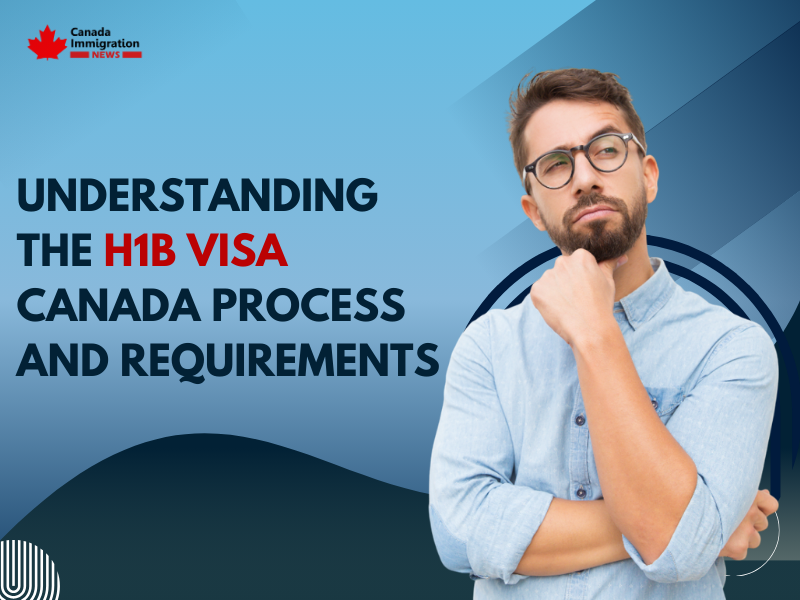By admin
Understanding the H1B Visa Canada Process and Requirements
The H1B is one of the most well-known U.S. work visas; however, many people question what its equivalent might be in Canada. While there isn’t an exact H1B visa for Canada, learning about the H1B process for the United States will give you a general understanding of how it works. In this post, we will provide an in-depth overview of just what requirements there are to work in Canada on a step-by-step basis of the H1B Visa Canada process and main differences from the U.S. procedures.
What is the H1B Visa Canada Equivalent?
First of all, let’s establish that there is no H1B visa for Canada. This is an American thing: An H-1B allows U.S. employers to temporarily employ foreign workers in specialty occupations. But maybe versions for Canada could be TFWP- Temporary Foreign Worker Program, or perhaps the IMP- International Mobility Program; these serve related purposes but are handled differently and with different eligibilities to apply.
Understanding the H1B Visa Canada Process: TFWP and IMP
There is no H1B Visa Canada, but taking a closer look at how Canadian work permits work can put this into perspective. The TFWP and IMP are two major avenues through which foreign workers come into the country:
- TFWP: This program allows Canadian employers to hire temporary foreign workers. Applications through the TFWP are usually subject to a Labour Market Impact Assessment-proof that offering the job to a foreign worker will not harm the Canadian labour market.
- International Mobility Program (IMP): Under this program, employers can hire foreign workers with no requirement of LMIA. The IMP has several streams, which include that of intra-company transferees, significant benefit workers, and those that come under international agreements such as NAFTA, commonly referred to as USMCA today.
Key Requirements for Canadian Work Permits
To understand the H1B Visa Canada equivalent, it is important to understand some of the basic requirements that are in place for Canadian work permits:
- Job Offer: A valid offer from an employer in Canada is needed. It must be on a specific form and manner of full-time and consistent with the worker’s skills and qualifications.
- Proof of Qualification: Applicants must provide proof of qualifications-educational, experience, and skills relevant to the offered job.
- Employer Compliance: As employers, it is important that the employers comply with the labor laws of Canada and prove that they are offering decent wages and working conditions. For TFWP, this is done with an LMIA while for the case of IMP, it requires adhering to the conditions under the various programs.
- Application Forms and Fees: The necessary forms are to be submitted by the applicants, with the fees that are required for the process. This involves biometric details and medical examinations for some categories.
Similarities and Differences with H1B Visa
While there is no such thing as an H1B Visa Canada, the process for a Canadian work permit is indeed comparable to that of the U.S. H1B in that it requires most of the same needs on a job-specific basis and the same employer responsibilities. Both the system requires the proof of specialized skill/qualification and to follow a particular application procedure. However, there are differences in the application procedure and type of work permits:
- LMIA-Labor Market Impact Assessment: Unlike the H1B visa, that doesn’t require a labor market test, TFWP asks for employers to obtain an LMIA to prove that hiring a foreign worker will not adversely affect the local job market.
- Types of Work Permit: Whereas the H1B is purely for specialty occupations in the US, in Canada, there are a variety of work permits targeted toward different job categories and various situations.
How to Apply for a Canadian Work Permit
Application procedures for work permits in Canada take several stages. The following are those stages:
- Identify the Correct Program: Depending on your job offer and qualification, identify whether you should apply under the TFWP or the IMP.
- Obtain a Job Offer: You will need to have a valid job offer from an employer in Canada. This job offer should satisfy the necessary conditions of the chosen work permit program.
- Application Submission: Fill in the application forms, get the required documents ready, and submit your application online or through a Canadian visa office.
- Pay Fees and Biometrics: The candidate will have to pay the fees for the application along with biometric data where necessary.
- Waiting for the Decision: When you have finally submitted your application, you wait for a decision by Canadian immigration authorities. The time it takes for processing also depends on the type of work permit and the applicant’s situation.
Although the H1B visa is unique to the United States, understanding the context of H1B Visa Canada gives a broader vision of how work permits function in Canada. Both TFWP and IMP come up with ways through which foreign workers can temporarily work in Canada. Knowing what is required and how to apply for these goes quite a distance in ensuring that the right decisions concerning working in Canada are arrived at.
In a nutshell, there is no H1B Visa Canada; however, learning about the different requirements and processes to obtain work permits in Canada will help you do what you want to be able to do with your employment in Canada.
